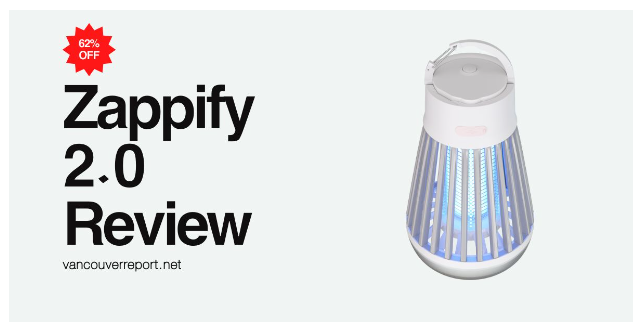Streamlining Solutions for Industrial Converting Manufacturing Processes
Industrial converting is the process by which raw materials are transformed into finished goods suitable for various industrial uses. This encompasses a broad spectrum of activities, including cutting, coating, slitting, laminating, and die-cutting. Manufacturers and businesses rely on industrial converting to create customized materials that meet specific application requirements. The precision and innovation within this field are pivotal for producing specialized products that serve numerous sectors, including automotive, aerospace, healthcare, and electronics.
The industry’s ability to tailor materials to unique specifications has led to advancements in product functionality and longevity. For example, converting processes enable the production of materials with enhanced properties such as flame resistance, electrical conductivity, and high strength-to-weight ratios. With the incorporation of new technologies and materials, industrial converters provide solutions that improve efficiency and performance across various manufacturing processes.
Industrial converting not only plays a critical role in product development but also contributes to supply chain management. By optimizing material usage and minimizing waste, converters help industries reduce costs and meet sustainability goals. As market demands evolve and new materials emerge, the field of industrial converting continues to adapt, ensuring that it remains an essential component in the manufacturing landscape.
Fundamentals of Industrial Converting
The industrial converting companies transform raw materials into finished products through various processes and techniques. This section explores the core processes and the associated materials and their applications in the industry.
Converting Processes
Converting can encompass a range of activities, but some core processes are fundamental to the industry. These include:
- Cutting: Employing methods like die-cutting and laser cutting to size materials.
- Laminating: Combining layers of materials, possibly with different properties, for enhanced functionality.
- Coating: Applying substances to a substrate’s surface to alter its properties, such as increasing resistance to elements or improving adhesion.
- Printing: Depositing inks or coatings to create patterns, designs, or information on the substrate.
Materials and Applications
The choice of material is crucial as it dictates the converting method and potential applications. The materials commonly used include:
- Plastics: Utilized for their versatility and durability in packaging, medical devices, and more.
- Metals: Often used for their strength in automotive and aerospace components.
- Paper and Cardboard: Applied in packaging solutions and printed media.
- Adhesive Films and Foams: Common in the creation of seals, gaskets, and insulation materials.
The applications of these materials after conversion are vast, serving industries from healthcare and electronics to consumer goods and automotive manufacturing.
Machinery and Equipment
In the field of industrial converting, specific machinery and equipment are essential for the effective transformation of raw materials into finished products. Each piece of machinery is designed for precision and efficiency, aligning with the diverse requirements of converting processes.
Cutting and Slitting Techniques
Cutting and slitting equipment is crucial for sizing materials to exact specifications. Rotary die-cutters use custom-shaped dies to cut intricate designs, while guillotine cutters offer precise straight cuts. Slitting methods are implemented by machines like razor slitters, which make straight, clean cuts using a sharp blade, and rotary slitters, which handle high-volume and continuous production needs.
Coating and Laminating Methods
Coating and laminating machinery apply protective or functional layers to the material. Extrusion coating involves melting a polymer and applying it to the substrate, while roll coating uses engraved rollers to deposit coatings with precision. In laminating, thermal laminators use heat to bond layers, while cold laminators rely on pressure-sensitive adhesives.
Printing and Finishing Operations
Printing machinery varies from flexographic printers, which are suitable for large runs of labels and packaging, to digital printers that offer customization and shorter runs without the need for printing plates. Finishing operations include UV coating for durability and sheen, as well as die pressing for creating embossed or stamped effects on the final product.
Quality Control and Testing
Quality control and testing in industrial converting are critical for ensuring product reliability and adherence to industry standards. These processes minimize defects and ensure consistent production outcomes.
Standards and Regulations
Industrial converters must comply with a variety of standards and regulations that dictate quality assurance. International Organization for Standardization (ISO) and American Society for Testing and Materials (ASTM) are two primary bodies influencing these standards. Companies often obtain certifications like ISO 9001 to demonstrate adherence to quality management principles. Regulatory bodies in specific sectors, such as the Food and Drug Administration (FDA) for medical devices, can mandate additional requirements.
- ISO 9001: Defines criteria for a quality management system.
- ASTM: Provides standard specifications, test methods, and practices.
- FDA: Enforces regulations for products affecting human health.
Testing Procedures
Industrial converting companies use various testing procedures to evaluate product properties and performance. These tests are performed throughout the production process to detect issues early and prevent them from becoming larger problems.
- Material Testing: Checks for tensile strength, tear resistance, and elongation.
- Product Testing: Measures adhesion, thickness, and moisture content.
In-line testing is a proactive approach where converters integrate sensors and instruments directly into production lines. These tools provide real-time data regarding the quality of the material as it is being processed.
- In-line Tensile Testers
- Thickness Gauges
- Moisture Sensors
Periodic batch testing is also employed, where selected samples from each batch undergo rigorous testing to ensure quality consistency. This is often documented meticulously to maintain a thorough quality assurance record.
Innovation in Converting
Converting industry has seen significant strides with the integration of high-precision technologies and the implementation of eco-friendly processes.
Advancements in Technology
The converting sector has witnessed a revolution with the integration of digital printing that allows for high-speed, custom runs with detailed graphics. Laser die-cutting equipment brings unparalleled accuracy and speed, fostering more complex designs and shapes. In addition, automation has become crucial, enhancing efficiency and reducing human error through the use of robotics and sophisticated software for inventory and workflow management.
- Digital Print Technologies: Improved speed and customization
- Laser Die-Cutting: High-precision and versatile designs
- Automation: Enhanced efficiency and accuracy
Sustainable Practices
Sustainability is now at the forefront of the converting industry’s innovation efforts. The use of biodegradable materials is on the rise, reducing environmental impact. Water-based inks and solvent recycling systems have dramatically reduced the hazardous emissions traditionally associated with printing and coating. Moreover, energy consumption in production processes has been optimized through the implementation of energy-efficient machines.
- Biodegradable Materials: Less environmental footprint
- Water-based Inks & Solvent Recycling: Reduced emissions
- Energy-Efficient Machines: Lower energy consumption
Market Dynamics
The Industrial Converting industry is shaped by intricate supply chain networks and sensitive economic fluctuations. Understanding these factors is crucial for stakeholders to navigate the market effectively.
Supply Chain Considerations
Supply chains in Industrial Converting are complex, involving various components and stages. Key players include raw material suppliers, converters, distributors, and end-users. The industry’s reliance on raw materials such as polymers, metals, and adhesives means that supply chain disruptions can significantly affect production timelines and costs.
Economic Factors
The industry’s financial health is subject to a range of economic indicators and trends. These include shifts in demand, the impact of fiscal policies, and competitive pressures that impact pricing and profitability. Demand fluctuations can be influenced by changes in key end-user markets such as automotive and electronics.



